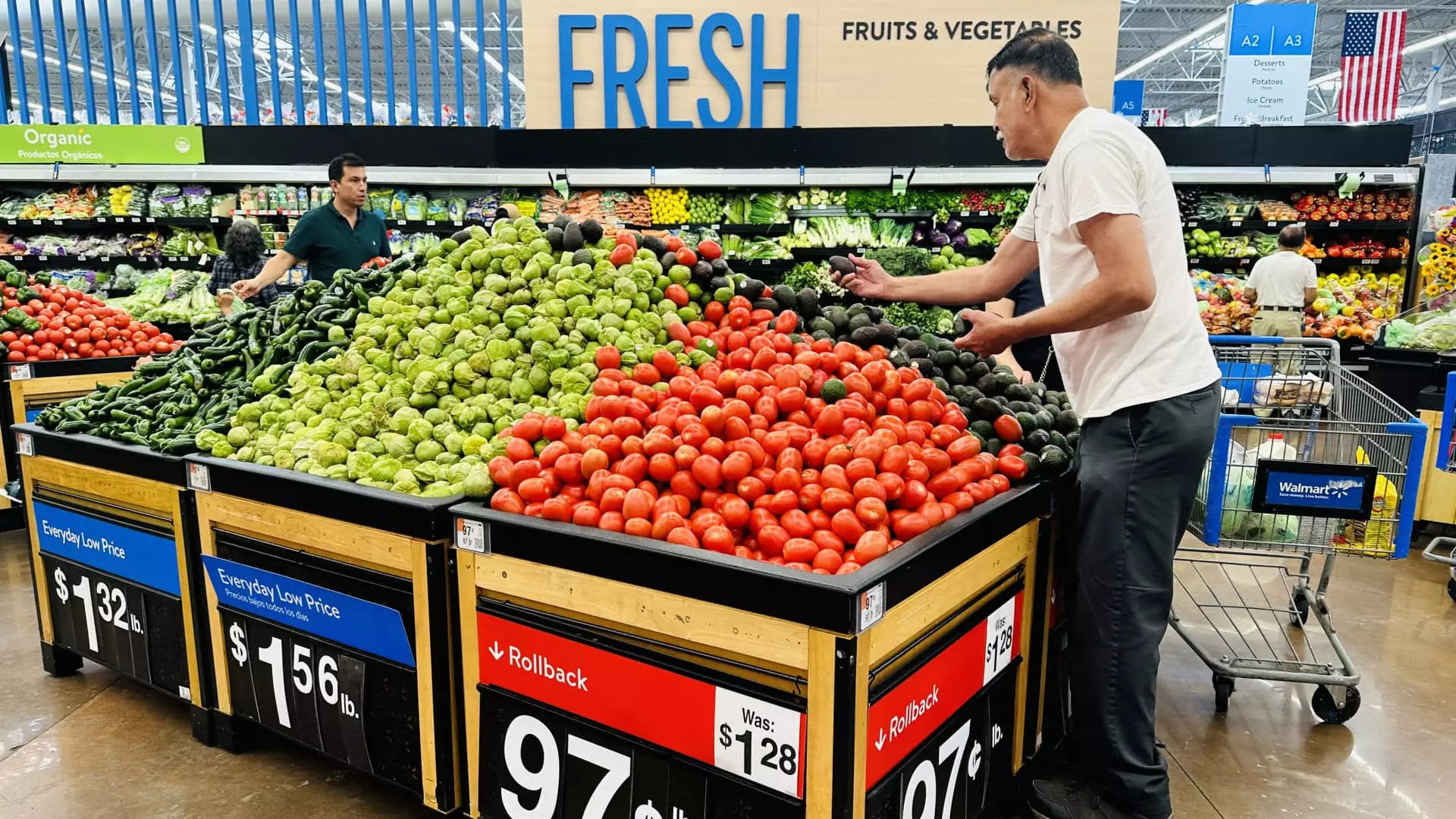In recent times, an increasing number of Americans are opting for Buy Now, Pay Later (BNPL) loans to manage their grocery expenses. This shift reveals a significant trend indicating that many individuals are feeling the immense strain of a faltering economy. Data from Lending Tree paints a stark picture: approximately 25% of BNPL users have resorted to financing their grocery bills, a significant jump from previous years. As inflation continues to gnaw away at household budgets and interest rates linger at worrying highs, more consumers find themselves grappling with basic living costs—an alarming sign of the times.
The decision to utilize BNPL services for groceries is not a fleeting trend; it reflects a substantial behavioral shift in consumer spending. Once relegated primarily to discretionary items like clothing and electronics, the use of these short-term financial products has crept into essential purchases, highlighting the desperate measures many are taking to maintain their standard of living. The correlation between economic pressures and the increasing reliance on BNPL loans raises a critical question: how sustainable is this financial strategy in the long run?
The Latent Risks of BNPL Financing
The allure of BNPL loans stems mainly from their structure, which allows consumers to break down larger purchases into manageable installments. Unlike traditional credit cards, BNPL loans often come with no interest, making them an appealing option. However, the Lending Tree survey underscores a growing concern—41% of respondents reported being late on their BNPL payments in the past year, up from 34%. While many delays were short-lived, this trend raises red flags regarding the potential for debt accumulation and financial mismanagement.
Matt Schulz, Lending Tree’s chief consumer finance analyst, notes that while these loans can provide temporary relief, they carry inherent risks, especially when users attempt to juggle multiple loans simultaneously. With 60% of BNPL users admitting to holding multiple loans, the danger of falling into a vicious cycle of debt becomes alarmingly apparent. The initial appeal of easy payment plans can quickly dissolve into a financial quagmire if not managed vigilantly.
The Broader Economic Implications
This surge in BNPL usage isn’t just a consumer choice; it signals a troubling shift in the American economic landscape as people increasingly depend on credit—often at the expense of long-term financial stability. The decision by companies like DoorDash to accept BNPL payment options hints at a wider acceptance of debt-fueled consumerism. However, this shift presents a dual-layered dilemma. While it offers immediate access to products, it also fosters a culture where living on credit becomes normalized, jeopardizing overall financial health.
Critics argue that using BNPL for everyday essentials, particularly groceries, could lead to a decreased sense of value regarding personal finance. When consumers rely on pay later schemes, they may inadvertently undermine their understanding of actual budgeting. This reliance isn’t just reflective of consumer habits but could have ramifications for the economy as a whole. As more people struggle to pay off these debts, businesses might face increased defaults, leading to economic variability and unsettling oscillations in market consumer behavior.
A Social Promotion of Financial Literacy
The scenario painted by the current BNPL trends reveals a pressing need for improved financial literacy among American consumers. Many may approach these loans as a simple, interest-free solution to an immediate problem, without fully grasping the potential late fees and the ramifications of accruing multiple loans.
It is imperative for stakeholders—including educational institutions, financial institutions, and policymakers—to prioritize financial education initiatives aimed at empowering consumers with the knowledge needed to navigate these modern financial products responsibly. Such education can foster better decision-making and help consumers develop a more profound understanding of their financial obligations, reducing the risk of debt spirals caused by reliance on BNPL schemes.
The conversation surrounding BNPL and its implications must evolve from mere observation to actionable insights. As more Americans engage in this trend, understanding the delicate balance between convenience and financial health becomes vital in ensuring that short-term solutions don’t lead to long-term economic distress.

